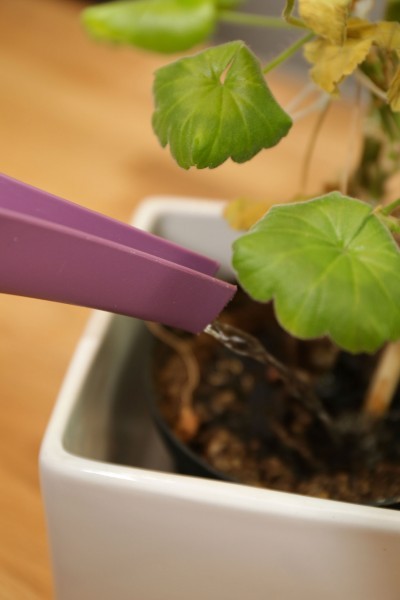






Most healthy container plants can tolerate short periods without water, but if your plant has been badly neglected, you may need to implement emergency measures to return the plant to health. This article will help you with fixing a dry container plant.
Leaf wilt is a sign of stress and the first indication that a potted plant is too dry. At this point, regular watering may restore the plant.
Indications that a potted plant is badly dehydrated include slow growth, yellowing and curling of lower leaves, and browning or brittleness of leaf edges. Dry plants often pull away from the sides of the pot. The leaves may take on a translucent appearance and the plant may drop its leaves prematurely.
Fixing a dry container plant is never a sure thing, but if there is life in the roots, you may be able to save the plant.
Rehydrating potted plants is tricky and regular watering won’t rehydrate a potted plant if the potting soil has shrunken away from the sides of the container. Instead of absorbing into the soil, water will run straight through the pot.
If your plant is in this situation, use a fork to carefully break up the dry, hardened potting soil, then submerge the entire container in a bucket of lukewarm water. Leave the pot in the water until no air bubbles float to the top.
Remove the pot from the bucket and allow the plant to drain thoroughly, then use clean scissors or pruning shears to prune the plant down to healthy, green growth.
Place the plant in a cool, shady location. Hopefully, it will begin to show signs of life within a few hours, but rehydrating an overly dry container plant may take up to a month.
If you aren’t sure if the plant is worth saving, remove the plant gently from the pot and check the roots. If the roots are shriveled and display no green even after your attempts at rehydration, it may be time to bid the plant farewell and start over with a healthy new plant.
Copyright © www.100flowers.win Botanic Garden All Rights Reserved